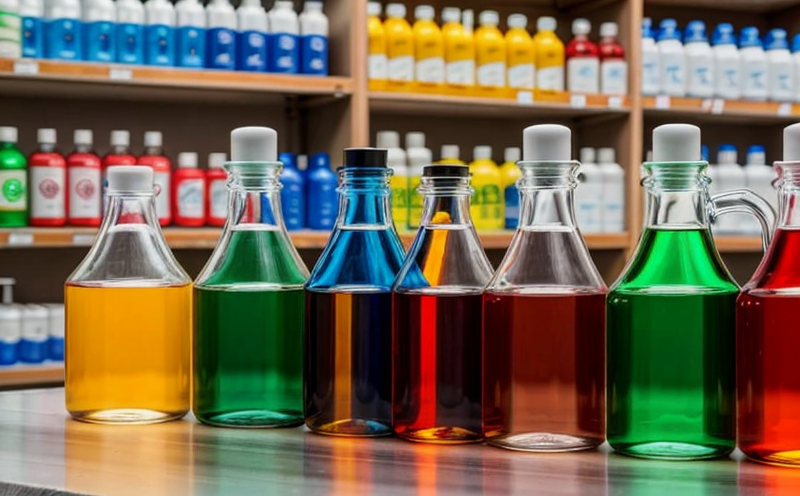AATCC 189 Detection of nonylphenol ethoxylates in fabrics
The AATCC 189 standard provides a method to detect and quantify nonylphenol ethoxylates (NPEs) in textile materials. NPEs are widely used surfactants that can persist in the environment, posing potential risks to water quality and aquatic life due to their slow biodegradation properties. Compliance with AATCC 189 is crucial for manufacturers aiming to meet regulatory standards such as REACH (Registration, Evaluation, Authorization and Restriction of Chemicals) and other national and regional regulations.
The test method involves several critical steps that ensure accurate detection of NPEs in fabrics:
- Sample preparation: The fabric samples are cut into small pieces to ensure uniformity. Samples should be free from visible dirt, oil, or grease.
- Solvent extraction: Samples are extracted with a suitable solvent to release the NPEs for subsequent analysis.
- Analysis: The extracted compounds are analyzed using High-Performance Liquid Chromatography (HPLC) equipped with a Diode Array Detector (DAD). This approach allows for precise quantification of NPE concentrations in the samples.
The acceptance criteria for AATCC 189 ensure that any detected levels of NPEs are within acceptable limits set by regulatory bodies. The method is sensitive enough to detect even trace amounts, making it a valuable tool in quality assurance and compliance programs.
Our laboratory follows the latest guidelines from AATCC 189 to provide accurate and reliable results. Our team of experts ensures that all samples are handled with care and processed using state-of-the-art equipment. This service is essential for any company looking to maintain high standards of environmental responsibility in their manufacturing processes.
For quality managers, compliance officers, R&D engineers, and procurement teams, this service offers critical insights into the chemical composition of textile materials, ensuring that products meet stringent regulatory requirements. By providing accurate data on NPE levels, our laboratory helps clients avoid potential legal issues and enhances their reputation for environmental responsibility.
Our approach to AATCC 189 testing includes a thorough understanding of both the standard itself and its broader implications in the textile industry. This knowledge allows us to offer customized solutions tailored to specific client needs, ensuring that every test is conducted with precision and care.
Industry Applications
AATCC 189 detection plays a pivotal role across various sectors within the textile industry:
| Industry Sector | Application |
|---|---|
| Clothing Manufacturing | Detecting and reducing NPEs in clothing to comply with REACH regulations. |
| Fabric Dyers | Ensuring that dyed fabrics meet environmental standards by minimizing NPE residues. |
| Textile Chemical Manufacturers | Monitoring the quality of surfactants and chemicals used in textile processing. |
| Textile Testing Laboratories | Offering comprehensive testing services to support compliance with international standards. |
By leveraging AATCC 189, companies can stay ahead of regulatory changes and maintain a competitive edge in the market. The test results provide valuable data that can be used for product development, process optimization, and marketing strategies focused on sustainability.
- Detecting NPEs in pre-production samples to prevent non-compliance issues later in the production cycle.
- Monitoring NPE levels during ongoing production runs to ensure consistent compliance with regulations.
- Testing final products before release to market to confirm that they meet all necessary standards and certifications.
The data obtained from AATCC 189 testing can also be used in research and development efforts aimed at creating more sustainable textile products. By understanding the presence and concentration of NPEs, companies can explore alternative surfactants and formulations that are both effective and environmentally friendly.
Environmental and Sustainability Contributions
The detection of nonylphenol ethoxylates (NPEs) in fabrics through AATCC 189 is not only crucial for compliance but also contributes significantly to environmental sustainability:
- Reduction of NPEs: By identifying the presence of NPEs, companies can take proactive steps to reduce their use and impact on the environment.
- Avoidance of pollution: Eliminating NPE residues helps prevent contamination of water bodies, which is a major concern in environmental protection efforts.
The findings from AATCC 189 testing can guide companies in adopting greener manufacturing practices. This includes using alternative surfactants and optimizing production processes to minimize the use of NPEs. The data obtained also supports the development of more sustainable textile products, which are increasingly demanded by consumers globally.
Our laboratory’s commitment to AATCC 189 testing aligns with broader sustainability goals within the industry. By offering this service, we contribute to a cleaner and healthier environment, promoting responsible business practices that benefit both companies and communities.
Competitive Advantage and Market Impact
AATCC 189 detection of nonylphenol ethoxylates in fabrics offers significant competitive advantages for textile manufacturers:
- Compliance with regulations: Ensuring compliance with international standards such as REACH, Oeko-Tex Standard 100, and other regional regulations enhances a company’s reputation and market standing.
- Risk mitigation: Early detection of NPEs helps companies avoid costly legal penalties and damage to brand reputation.
- Sustainable branding: Demonstrating commitment to environmental responsibility can attract eco-conscious consumers, thereby enhancing brand loyalty and customer trust.
The ability to provide accurate and timely results from AATCC 189 testing also sets our laboratory apart in the market. Our expertise in this area allows us to offer comprehensive support to clients, helping them navigate complex regulatory landscapes with confidence.
By staying ahead of regulatory trends and implementing sustainable practices, companies can maintain a competitive edge in an increasingly environmentally conscious world. Our service plays a vital role in enabling these efforts, ensuring that textile products are both compliant and sustainable.





